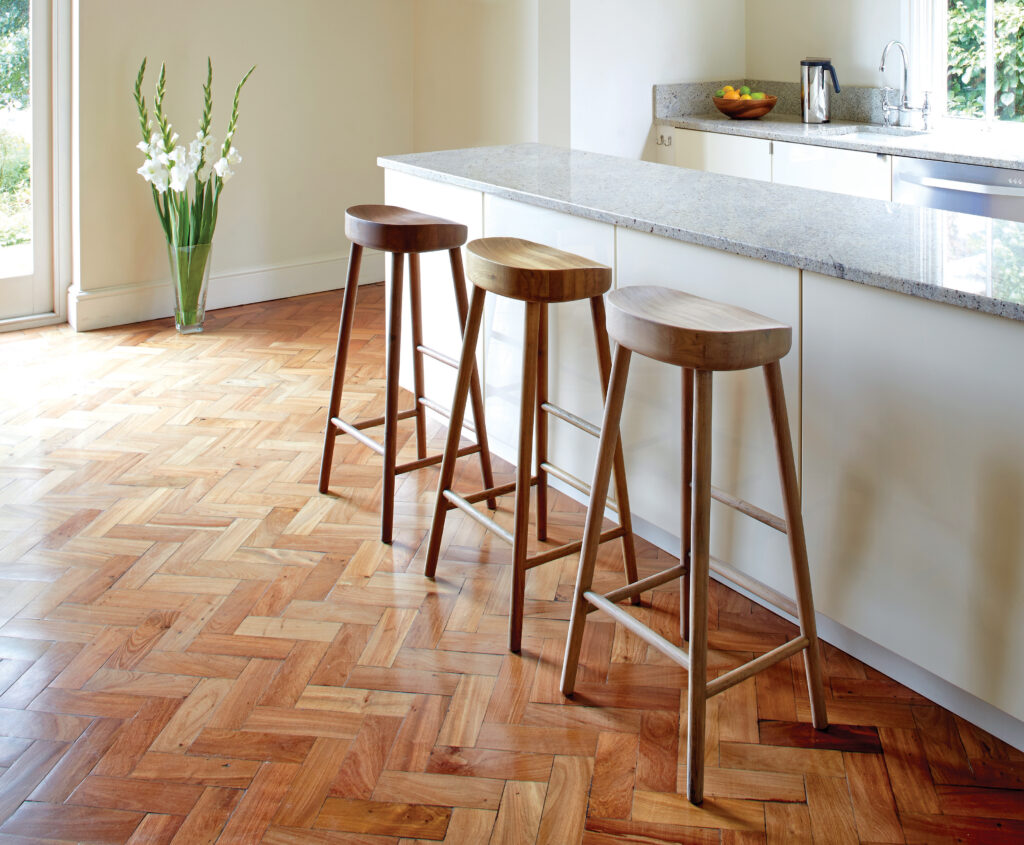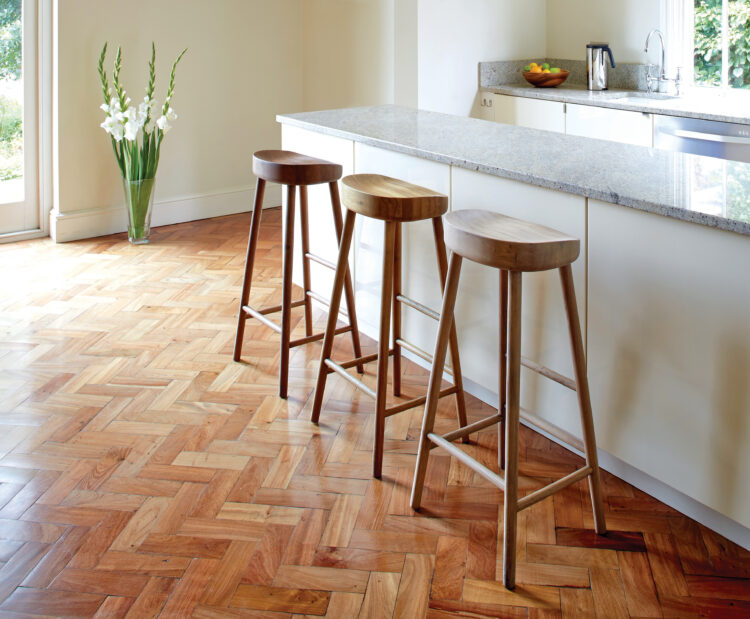Wooden floors in the home naturally get scuffed and worn over time. Here’s how to get them looking fresh and like new again

If you’ve already given your home interiors a new lick of paint, you may have noticed that your wooden floors are starting to look a little tired.
Worn and battered wooden floors can make a room feel old and untidy, but with a bit of time and some careful preparation, you can really effectively give floors a new lease of life.
Here are some tips on different techniques for updating your home flooring:
Varnishing wooden floors
Varnishing floors highlights the natural beauty of the grain in your wooden floors, and helps to provide long-lasting protection too. Try these tips from Ronseal to get a flawless finish. Note that this won’t work on painted floors.
Step 1: Preparation
For unvarnished wood, sand the floor with 120 grit sandpaper. Using a floor sander will make this much easier. Sand along the length of the boards and let the dust settle, then vacuum and wipe down the wood with white spirit.
For previously varnished wood, lightly sand with 120 grit sandpaper, going the length of the boards and letting the dust settle. Vacuum up the dust and wipe your floor down with white spirit. For old varnish that’s flaking, repeat step one using a floor sander and strip it back to the bare wood.
Step 2: Varnish
Prepare your choice of varnish, by stirring it well and testing the colour on a small patch to check you’re happy with it. Ronseal Perfect Finish Diamond Floor Varnish (€58 per 2.5L) is available in five colours, including clear, and is touch dry in 30 minutes. You can apply a second coat after two hours.
Start applying from the corner furthest from the door and work along the length of two floorboards at a time – it’s never a good idea to varnish yourself into a corner. Three coats will give you the best protection, but you will need to leave two hours between each coat. Before you begin the third, use 240 grit sandpaper (without the floor sander) and very lightly sand the floor.
Wipe the floor down with a damp cloth and then apply the third coat. You’ll be able to walk over it in two hours but will need to wait 24 hours before putting your furniture back. After 72 hours, it will be tough enough to with stand anything. The varnish easily washes off with warm soapy water, so don’t worry if you get some on yourself.
Step 3: Aftercare
Regular cleaning will prevent any dirt or grit from scratching the floor. You can vacuum and sweep without causing any damage to the finish, and use a damp microfiber cloth or mop to clean surface stains and scuffs. A specialist wood floor cleaner will be able to lift any stubborn marks but be sure to follow the instructions correctly.
Painting wooden floors
White painted floors look modern and bright, and the light colour actually shows up dirt and dust less than darker flooring. Paul Kennedy of painting and decoarating business Impressions has the following tips:
Step 1: Choose your primer
“The very best of primers that sticks to every surface is Zinssers Bin Shellac-based primer. It has a relatively low odour and dries extremely quickly. Farrow and Ball floor paint is a good option and has a lower odour, also Sherwin-Williams floor enamel paint is very good, and also has a lower odour and is fast drying. These are hard-wearing paints for floors that stand up to foot traffic and pet traffic very well. One might argue that oil-based enamel paints are more hard-wearing, but as with water-based paint for woodwork, the technology that goes into making these paints is getting better all the time, and they are more eco-friendly, both in relation to the application and tidy up. Other products worth considering are Ronseal water-based floor paints, and Douglas water and oil floor paints,” Paul says.
Step 2: Preparation
Remove any old product such as varnish or paint from the floor by using a heavy sandpaper with a floor sanding machine, working up to lighter papers until the floor is smooth. Clean the floor so it is dust-free.
“Knots can affect your finish, as sap from the knots in the woodwork can show through the paint. Treat them with a knotting solution,” Paul says. “To prime the floor, first, cut in the floor around the skirting board with a brush. Next, with a fine pile roller, roll the primer onto the floor.”
Step 4: Paint
When the primer is dry, repeat the process using floor paint. Paint the floor with at least two coats, allowing 24 hours between coats. The floor must be left to dry and to cure for a few days before moving your furniture back into the room.








